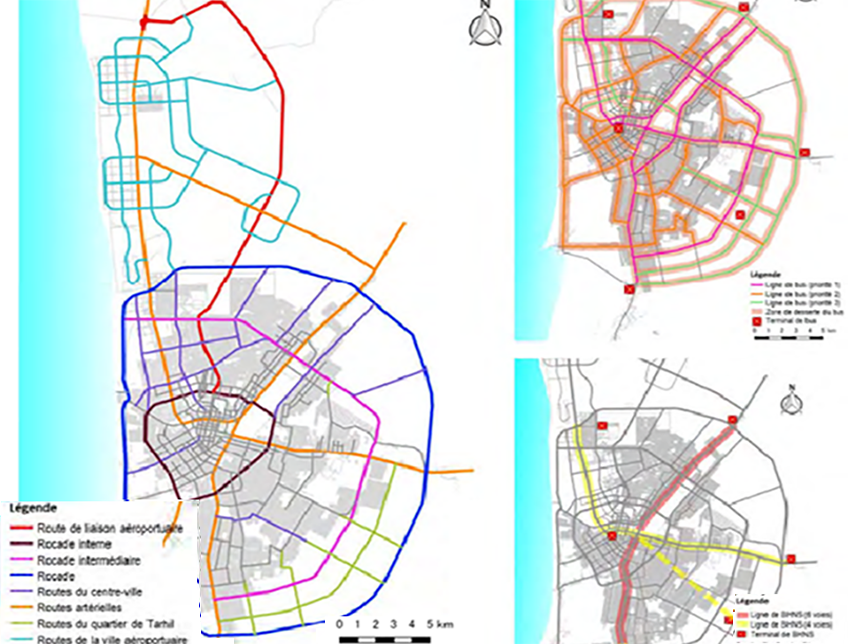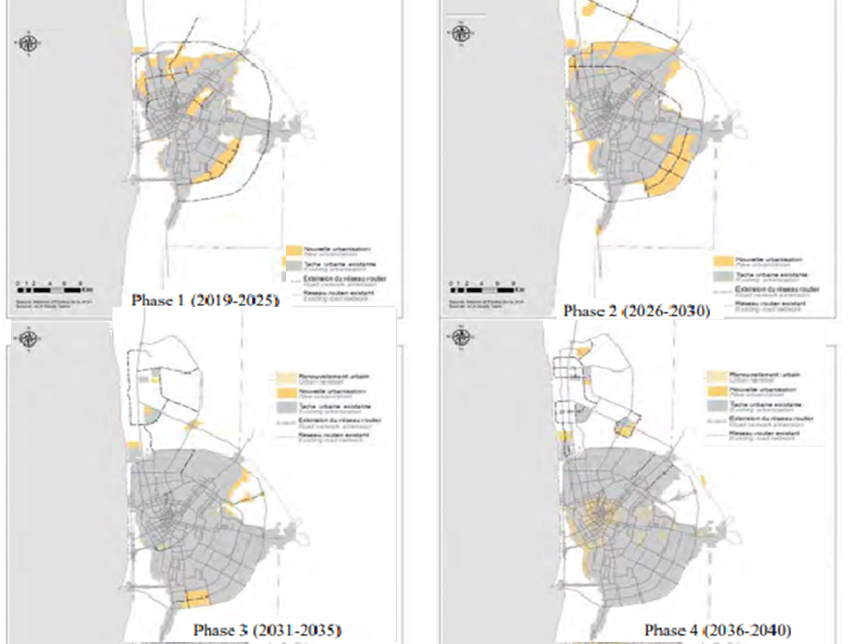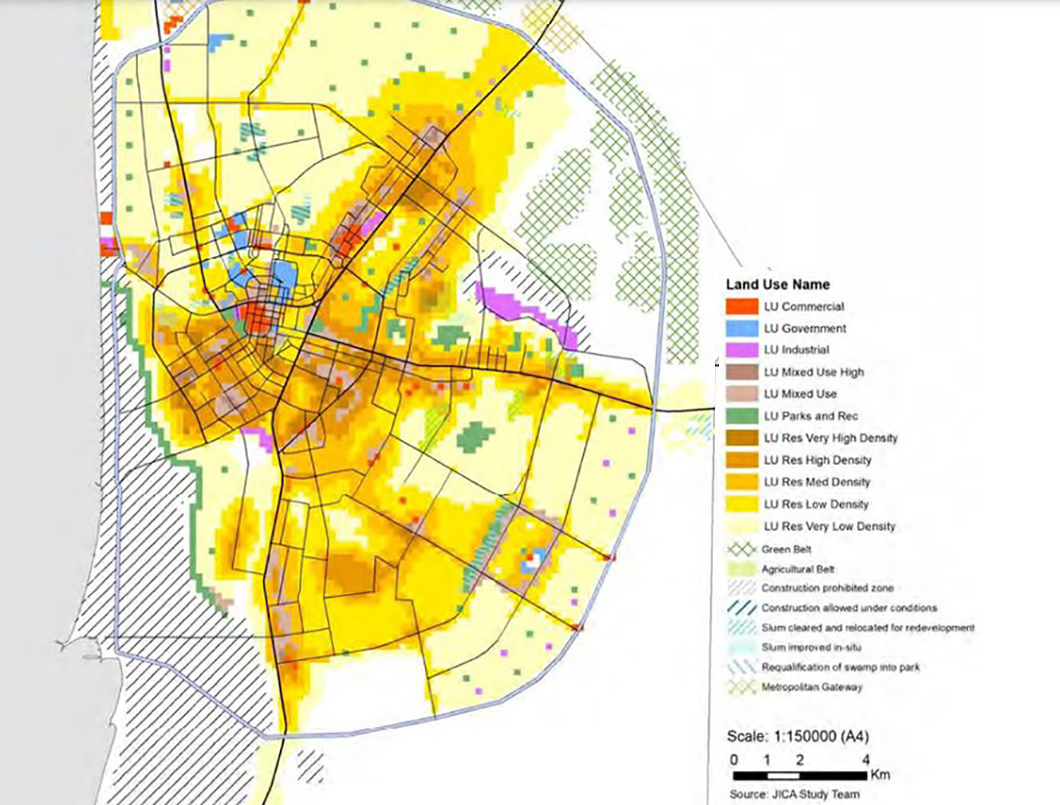
Close

Approach Words: Comprehensive Planning, Sustainability, Urban Livability
Public Policy Instruments: Organization, Planning, Regulatory
The Urban Development Master Plan (2040), or Schéma Directeur d’Aménagement Urbain (SDAU 2040), is an urban masterplan that guides the urbanization in Nouakchott City by 20401. The city has been facing issues of sprawl, traffic congestion, and inadequate municipal infrastructure2. The project seeks to address rapid urbanization challenges through urban planning tools and sustainable development principles, while also enhancing the capabilities of agencies responsible for urban planning and execution3 i.

Title: Summary of strategic orientation.
Source: Click Here

Title: Proposed Future Road Network and Public Transport Networks (Bus And BRT).
Source: Click Here

Title: The urban development of Nouakchott along the 4 phases of SDSU 2040.
Source: Click Here

Title: Proposed future land use.
Source: Click Here
Published in 20184, the masterplan covers the whole area of Nouakchott City, now encompassing 1,129 km. It estimates that the population of Nouakchott will increase from 958,000 in 2013 to 2.2 million in 20405. The planning process has relied heavily on extensive stakeholder engagement, with 2 large scale seminars and 27 public consultations in the communes6. It focuses on key pillars to guide the master planning process. These include issues related to urban sprawl, mobility, environmental vulnerability, access to municipal services, public health, green spaces, culture and religion, economic growth, governance, housing, and the identity of the capital7.
In order to adequately address the concerns associated with rapid urbanization, the plan defines three major core concepts for development. These include8:
The plan also addresses issues of sprawl by prohibiting the building of structures in areas vulnerable to flooding and other environmental threats9. In the efforts to densify urban areas, the plan is sensitive to the social and cultural norms of the city, and ensures existing low-density housing characteristics are not overhauled across the city, but rather the identity of the city is maintained10.

Consultant/Designer

Contractor/Implementer
Ministry of Housing, Urban Planning and Regional Development (MHUAT)26
The plan is designed for implementation through 4 major phases, outlined below11:
The plan also proposes Local Plans of Urbanism (PLU). These are legally binding plans to restrict regulations and contain detailed zoning controls and regulations for the administrative area of one Commune selected during the Project (Tevragh Zeina Commune)17. The plan is geared towards enhancing living standards and promoting sustainable urban growth while providing a replicable model for areas without PLU18.
The master plan project was initiated in 2016 by the Government of Mauritania, specifically the Ministry of Housing, Urban Planning and Regional Development (MHUAT) and the Ministry of Infrastructure and Transport (MET), as a revision and expansion of the intervention area of the earlier SDAU 200319. The Government relied on the Japan International Cooperation Agency (JICA), which outlined a comprehensive plan for the project20. The master plan was approved by the Council of Ministers in 2019 and will be embedded in the planning regulations to be implemented under the oversight of MHUAT21.
Project Link
Endnotes
References